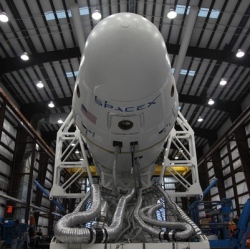
At the moment, if you want to fly to the International Space Station, you’re only option is to hitch a lift on one of Russia’s 1970s-vintage Soyuz space capsules. That may not be the case for too much longer, with NASA announcing that it has approved the first milestone for the manned version of SpaceX’s Dragon spacecraft.
Executed under a Commercial Crew Transportation Capability (CCtCap) contract, the milestone consists of a successful Certification Baseline Review of SpaceX’s plans for the manufacturing, launch, flight, and recovery of its Crew Dragon (AKA Dragon v.2) and the Falcon 9 v.1.1 rocket, which will propel it into orbit.
One of 23 agreements and milestones under the space agency’s Commercial Crew Program approved this year, it is the latest step in developing privately owned and operated US spacecraft to ferry crews to the ISS. These spacecraft are currently being developed independently by SpaceX and Boeing.
When certified, the two spacecraft will be able to travel to and from the ISS carrying up to seven passengers or a mixture of passengers and cargo. Being capable of remaining on station for 210 days, they will double as lifeboats; allowing ISS crews to be larger than facilitated by the three-person Soyuz.
